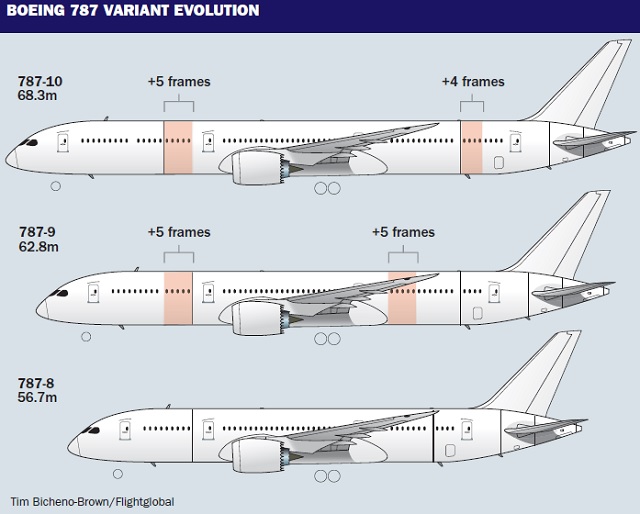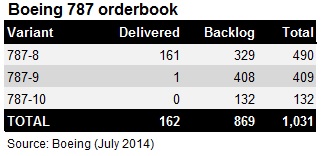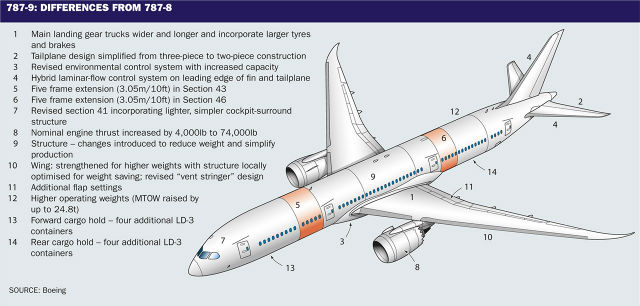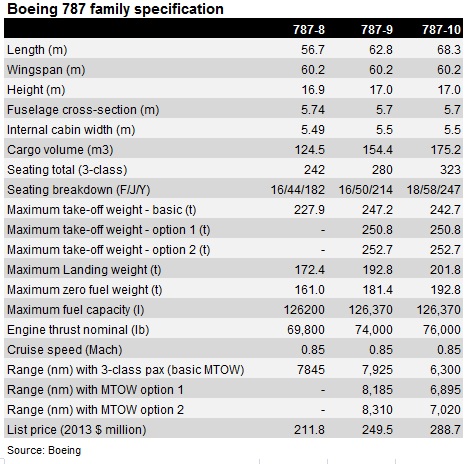Nuovi ordini durante Dubai Air Show 2023
- Autore Discussione belumosi
- Data d'inizio
Non credo rimarranno tutti e 116: i primi (forniti nel 2007, mi pare) sono già stati smantellati, mentre altri sono stati riscattati a fine leasing e sono ora di proprietà, l'ultimo invece è stato consegnato nel 2022, pertanto nel 2041 avrà "solo" 19 anni, che ci può stare come vita. Sarà una dismissione graduale, ovviamente, e personalmente credo che, alla fine, più che le dimensioni e la capacità, per EK il problema sia quello di potere installare le docce sui 350 e 777, considerato che ci hanno costruito sopra un battage pubblicitario non indifferente....
Se 116 A380 rimarranno fino al 2041...
- 10 Dicembre 2007
- 15,026
- 3,334
Sarà sicuramente così, mi sono espresso male io.Non credo rimarranno tutti e 116: i primi (forniti nel 2007, mi pare) sono già stati smantellati, mentre altri sono stati riscattati a fine leasing e sono ora di proprietà, l'ultimo invece è stato consegnato nel 2022, pertanto nel 2041 avrà "solo" 19 anni, che ci può stare come vita. Sarà una dismissione graduale,
Credo che anche loro si siano messi un po' più tranquilli.credo che, alla fine, più che le dimensioni e la capacità, per EK il problema sia quello di potere installare le docce sui 350 e 777, considerato che ci hanno costruito sopra un battage pubblicitario non indifferente.
Sui 359 e sui 787 non dovrebbe nemmeno esserci la first (https://www.executivetraveller.com/news/emirates-airbus-a350-boeing-787-premium-economy-first-class), per cui dubito stiano ancora pensando alle docce.
Anche i 380 riconfigurati mantengono la vecchia F, seppur con piccole modifiche e nuovi rivestimenti. Probabilmente installare la nuova F, quella presentata sul 777, sarebbe costato troppo (e avrebbe fatto perdere dei posti). A questo punto sono curioso di vedere come si comporteranno con i tripli in ristrutturazione: lifting agli 8 posti dell'attuale F, o passaggio a 6 posti con la nuova F.
- 10 Dicembre 2007
- 15,026
- 3,334
Questo articolo di FG spiega le varie differenze.Conscio di andare un po' OT, chiedo in quale senso la commonality del 788 sia inferiore a quella del 789 vs 781.
ANALYSIS: Why Boeing’s 787-9 is more than just a stretch
By Max Kingsley-Jones10 July 2014
When launch customers Air New Zealand, United Airlines and All Nippon Airways introduce their first 787-9s in the coming months, it will mark a watershed for Boeing’s Dreamliner.
Seattle will be hoping that after a smooth nine-month flight-test programme on the -9, it can finally put the troubled birth of its smaller sibling behind it. It will at last be able to fully focus on the remarkable technological innovation that this all-new twinjet represents, and move on from the undercurrent of issues that surrounded the programme’s early years.
The first 787-9 built (ZB001), which was the 126th Dreamliner off the line, made its first flight from Everett on 17 September 2013. At the first flight event, Boeing Commercial Airplanes president and chief executive Ray Conner described the new arrival as “a beautiful machine. It’s going to be the backbone of the 787 fleet, for sure.”
The 787-9 is in “the sweet spot from the long-haul perspective”, he added. “The -8 is more of the 767-sized airplane, to open up thin routes, more of a pathfinder. The longer-range, higher density 787-9 will pick up from there.”
By June 2014, the 787-9 was closing in on its smaller sibling in the sales stakes, with its orderbook of 413 sales (from 26 customers) approaching the 486 for the 787-8. Flightglobal’s Ascend Fleets database shows that 787-9 sales have been outpacing the -8 in the order of two to one since mid-2010.
Boeing had a stretched derivative as part of the 787’s family plan from day one – as well as an optimised short-range variant for the Japanese regional market. At the time of launch in April 2004 (as the “7E7”), the baseline 240-seater was due to fly in 2007 and enter service a year later. When plans were firmed for the 787-9 stretch, it was expected to follow the -8 by around two years and debut in 2010.
There was also early talk of a “double-stretch”, the -10X, but plans went on the back burner before being revived last year when it was launched at the Paris air show for a 2018 debut. Air New Zealand was nominated launch operator for the 787-9 in May 2006, when it converted its order for six 787-8s to the larger variant. Delivery was slated for late 2010.
As is now well known, the only date that Boeing kept to in the 787’s original development schedule was the much-vaunted roll-out, on 8 July 2007 (or “7-8-7” in US date format). First flight – originally due within weeks of the roll-out – finally took place two-and-a-half years later on 15 December 2009. By that time, Boeing had dropped plans for the “regional” 787-3, but was moving forward with its 787-9 efforts.

As well as falling far behind schedule, the early 787s also missed their performance targets, with Boeing Commercial Airplanes’ then-chief Jim Albaugh admitting in March 2011 that “the first [-8] airplanes are going to be a little heavy”. Engine performance was also behind target, and all the stakeholders have worked hard to claw back the deficit – an effort that the 787-9 appears to have benefited from.
Launch customer All Nippon Airways flew the Dreamliner’s debut service on 26 October 2011, but operations were halted globally in January 2013 before deliveries could get fully into their stride in the wake of the infamous lithium-ion battery fires. The Dreamliner’s airworthiness was restored through a series of modifications to the battery installation, and the fleet returned to service after a three-month hiatus in April 2013.
Although the stretch was in the plan from the very beginning, Boeing concentrated on the baseline variant initially, before finalising the 787-9 configuration in mid-2010. By this time, service entry with Air New Zealand was slated for late 2013.

The rationale behind the larger variant was simple: take the 787-8 with its innovative carbonfibre wing and fuselage structure (composites represent 50% of the aircraft, by weight, compared with 20% for aluminium) and advanced-technology engines from General Electric and Rolls-Royce, and stretch it to boost capacity by around 40 seats to 280 passengers.
Despite being a growth variant, the -9 has an increase in range over its smaller sibling to the tune of some 450nm to 8,300nm (15,370km), despite having near-identical fuel capacity.
“We made a conscious decision to drive improvements into the second 787 model to get the increased range as well as passenger count,” says Mark Jenks, vice-president of 787 development. “But the fact that we were able to take significant weight out of the airplane with the learnings that we had, in addition to the reduced drag from the HLFC (hybrid laminar flow control) system, we were able to go to a place on the [aircraft development] ‘Z’ chart that normally would not be the spot for the second model.”
Boeing is guarded about the -9’s clever new piece of engineering for competitive reasons, saying only that the HLFC system provides a “significant” reduction in drag and therefore fuel burn. It clearly believes in the technology, as it will be standard on both the -10 and the new 777X family.
Learnings from the design and construction of the baseline Dreamliner incorporated into the -9 deliver more efficiency both to the production system and the aircraft’s performance. But incorporating these improvements has impacted commonality between the -8 and -9, with the latter now effectively becoming the base aircraft from which the -10 is being developed.
“The -9 is ‘more different’ from the -8 than the -10 will be to the -9,” says Jenks. “We made a number of improvements based on the early learning on the -8. Some of those learnings and revisions are going back on the -8, but some won’t.
“There are a number of improvements we made on the -9 that we’ve either already put back on the -8 or we already know we will and have a specific line number. There are others where we haven’t made any firm decisions.
“We have reduced the weight of the -8 since its introduction by putting -9 improvements on to it,” he adds.
“So there was a fair amount of difference when we rolled in our learning from the -8. Because we learned so much so quickly and got all that into the -9, it’s at a point where we can keep it very common and the -10 will be very, very similar to the -9. Large parts will be virtually identical.”
The -9 improvements that are being reworked into the -8 have been phased in groups, but there has been no major block change, says Jenks. “We do have a very disciplined process where we group together the changes into logical blocks of improvements and put them back on to the -8.”

Click to enlarge image
While the 787-9’s weight is higher than the -8’s due to the stretch and increased skin gauges to cater for the higher maximum take-off weight, Boeing has saved “greater than 1,000lb” through weight efficiency over the -8, says Ed Petkus, deputy chief project engineer on 787 derivative development. “And we are below our committed weight on the programme. Mark [Jenks] and I drove the team to watch the weight because we were recovering performance for our customers, so that was a major focus,” he adds.
“The -9’s weight today is virtually identical to mid-2010 when we had firm configuration. It’s actually a few hundred pounds less,” Jenks says.
All the -9’s improvements will be carried across to the 787-10 – which is effectively a “simple stretch” of the -9 offering 40 more seats but approximately 1,300nm less range. Boeing completed firm configuration in April 2014 and is targeting a 2017 first flight for a 2018 service entry.
Jenks says that the decision “not to chase extra range” on the -10 is key to the very high level of commonality between the two stretched variants and enabled them to be similar structurally. “We kept the MTOW the same and let the range fall out, which is plenty for over 90% of the addressable market,” he says.
Probably the single most interesting feature of the new 787 variant is its HLFC system on the leading edges of the fin and tailplane. Petkus explains that the system works by providing suction which delays the transition of the boundary layer from laminar flow into drag-incurring turbulent flow. “So we get a block fuel efficiency overall, for the airplane,” he says.
“I can’t share [much more], except that both Airbus and us have been working on that for decades and I think Boeing has finally found the ingredients to the ‘secret sauce’ to make that work,” he adds.
“We demonstrated that on a small inboard panel on a -8 flight-test airplane a couple of years ago, which gave us the confidence to put that on to the -9.”
Boeing will not disclose the magnitude of the aerodynamic benefit that HLFC delivers, beyond saying it is “significant”. Jenks adds: “The tail contributes a fair amount of drag in cruise, so being able to attack the drag of the empennage has a pretty significant benefit to the overall performance.”
While HLFC is incorporated into the 787-10, Jenks says that there is “no firm plan” to introduce it on the -8. “We certainly could. There’s a business case we have to run – it’s a function of how many more -8s are we going to build and the detail cost to put it on.”
The 787-9 is 10 frames longer than the -8, with five-frame (3.05m/10ft) extensions forward increasing overall length to 62.8m. The -10 is stretched by a further nine frames – five forward and four aft.
The increased length is achieved by producing longer integral fuselage sections, which on the -9 are the Kawasaki Heavy Industries-built section 43 and Alenia-produced section 46.
Despite its longer fuselage, the -9 does not need a tailskid, but one will be incorporated on the -10, says Petkus.
The highest MTOW option offered on the -9 is 252.7t (557,000lb), which is 24.8t greater than the 787-8. This high-weight option was confirmed by Boeing for the -9 (and the -10) shortly after the -9’s certification. It is an approximately 2t increase over the previously highest weight offered (250.8t), delivering a range boost of around 120nm for each variant.
Boeing cites its “disciplined execution” of the 787-9’s development in allowing more range capability than previously planned. “Customers have the option of a higher MTOW to unlock even greater range or fly more passengers and/or cargo,” it says.
The fuselage structure of the -9 incorporates local strengthening to cater for the higher operating weights, as well as a revised frame design to improve weight efficiency.
“In the fuselage, we went from a two-piece frame construction [on the -8] to a one-piece frame construction,” says Petkus, referring to the internal fuselage frames which provide reinforcement every 60cm along the barrels.
“These look like a ‘Z’ and we didn’t know how to make a ‘Z’ in one piece so the -8 is basically made up with two ‘Cs’ that are riveted,” says Petkus. “We also didn’t know how close we could control the tolerances, but after we got confidence we found a way of making a one-piece frame which saves weight and complexity.”
This improvement is unlikely to be adopted wholesale for the -8’s fuselage, says Petkus, but might be incorporated in some sections.
In some areas, the fuselage skin gauge has actually been reduced, such as in the Spirit AeroSystems-built section 41 nose assembly. “We found we had over-designed it in some areas – and we’ve already put that [improvement] back on the -8,” says Petkus.
The section 41 also incorporates a redesigned cockpit surround structure that is lighter and more efficient to produce. “We’ve gone from a pretty complex machined-titanium structure for the ‘bird cage’ that supports the windows, to a single-piece aluminium design – which gives very significant cost and weight savings,” says Jenks. “We initially used a lot of titanium due to galvanic corrosion concerns [around using aluminium with composites], but as we’ve got smarter we’ve got very robust ways to work those issues. As long as you seal and coat things properly, it’s not an issue.”
Petkus says that this redesign, along with the reduction in fuselage skin gauge, was incorporated into 787-8 production on an aircraft built close in the sequence to first -9. Flightglobal understands that the section 41 redesign was introduced at a “design optimisation block point” with 787-8 line number 127, immediately after the first 787-9 (line number 126).
The use of titanium has also been dropped within the door surrounds. “We went to composite on the -9 and will put that back on the -8,” says Jenks.
The cockpit itself is identical to the earlier model, with changes limited to improvements to the flight-control laws and the additional flap settings.
The major system changes on the -9 are associated with the higher passenger count, says Jenks.
“We have fundamentally upgraded the capacity of the environmental control system (ECS), and there are some electrical power changes that go along with that. We’ve also increased the capacity of the ICS chilling system due to the additional galleys and increased number of carts.”

There are no changes to the modified lithium battery installation, which was introduced on the 787-8 in response to the fires that caused the 2013 grounding.
While the -9’s wing is identical to the -8’s in planform and area, it incorporates revised structural design, partly to improve construction and partly to cater for the higher weights.
The 787-9 has what is effectively the third major iteration of 787 wing, which had a block change from aircraft seven to incorporate significant weight reductions. More weight improvements were introduced throughout the airframe from aircraft 20 as part of a “mission improvement” block change, although the wing was affected to a lesser extent, says Jenks.
The -9 wing will be adopted for the -10, which is currently envisaged to share the same operating weights. The wing has been strengthened to accommodate the higher weights, as have the high-lift devices due to the higher approach speeds of the larger variant, says Petkus. There are also three additional, deeper flap settings.
The -9’s wing skins are increased in thickness and some of the fittings are increased in size. The -10 wing will have additional strengthening “in the order of 100lb” to cater for the slight increase in dynamic loads created by the longer fuselage, says Jenks. “Because it is very little weight, we can potentially put that same wing back on the -9, because it’s almost identical. So our goal is to truly have the same wing [on the -9 and -10].
“Right now we still see a demand for the -8, but the -9 and -10 look like the bigger long-term markets and so having the bulk of production use the same wing is a tremendous advantage.”
Petkus says material was removed from some parts of the wing on the -9, such as inside the leading edge, because “after further refinement we found we had too much strength capability in the -8, so we optimised it to have a weight improvement.
“One technology we introduced is the ‘vent stringer’. Instead of an I-shaped stringer on the -8, we went to a hat shape. This co-functions as the airplane’s fuel vent system in place of regular vents on the -8. It was expensive for us to build but it’s more structurally efficient,” says Petkus.
The redesign provides savings in both weight and assembly time, but is “one of the things that doesn’t make sense to put back on the -8”, he adds.
There are no material changes with the wing or fuselage structure, and earlier plans to replace some of the aluminium ribs with composite ribs in the -9’s wing were dropped. “We looked at it for three or four of the inboard ribs, but the technology wasn’t quite there and we didn’t need it for weight performance,” Petkus says.
Fundamentally, the -9’s side-of-body join design is “very similar” to the -8’s, which itself was subject to a redesign late in the programme after Boeing ran into major problems during ground testing prior to the Dreamliner’s maiden flight. This required major modifications to reinforce the structure inside the centre wingbox and wing.

Click to enlarge image
“We cleaned those changes up a little bit as they were made late in the game, and so it wasn’t necessarily the lightest design. We made some improvements to take out weight and make it a little bit easier to build to allow increased production rate. Some of those minor adjustments have been put back on the -8,” says Jenks.
“It’s a little bit heavier than before we had to add some of the changes, but we don’t plan a redesign.”
The architecture of the composite tailplane has been simplified by moving from the -8’s three-piece construction to a two-piece construction which improves weight and production efficiency, says Petkus. “We went from building it like a wing with two outboard sections and a centre box, to one centreline join.”
Initial manufacturing development work of the revised design was undertaken by Boeing at Everett, and series production is allocated to Boeing’s plant in Salt Lake City, where the fin is also built. Tailplane production will be shared with Alenia, which already builds the 787-8’s tailplane at its Foggia plant near Naples. “It was a matter of balancing Alenia’s production capability,” Jenks says. “They were ramping up on the -8’s [tailplane] just as we needed to get the -9 developed.”
Neither Rolls-Royce nor General Electric has produced new hardware specifically for the 787-9, but both engines have their nominal thrust bumped to 74,000lb (329kN) – up around 4,000lb. The -9’s introduction coincides with the latest upgrade to the Trent 1000.
Both engine makers have been progressively upgrading their 787 engines with packages that address fuel-burn and weight improvements as well as maintenance costs.
“Package C is standard for the Trent 1000 on the -9, which will be standard for the entire 787 family going forward,” says Jenks. "Right now all the -8s are flying with Package B engines, and they will move to Package C, so it will be a common engine going forward.”
“It so happens that the first production delivery of a Package C will be on the first -9.”
The GEnx-1B standard for the -9 is already being delivered on the -8, which features the latest performance improvement package, “PIP 2”.
R-R is developing a Trent 1000 growth version for the 787-10, dubbed the “TEN”, but this engine will also be available on the smaller 787s “and will likely precede” the arrival of the new Dreamliner variant, says Jenks. “The engine growth path isn’t strictly tied to the airplane. It’s to everyone’s advantage to have one engine standard as we go forward.”
The 787-10 will have a nominal 2,000lb thrust increase over the -9, to 76,000lb. Boeing is yet to disclose which launch customer will be the first to receive the new aircraft and which engine manufacturer will be the lead partner in the flight-test effort.
Major changes have been incorporated into the 787-9’s Messier-Bugatti-Dowty built main landing gear, which will be fed into the -10. The -9’s main gear trucks are both wider and longer than the -8’s to accommodate the larger tyres and brakes to cater for the higher operating weights. The nose-gear is unchanged.
“The truck changes were made to get more width so we could keep the pavement loading in line as we increased the take-off weight,” says Petkus. “We will use the same truck size on the -10, but we’re going to add a semi-levered gear to buy a little more rotation margin.”
To accommodate the larger gear, the depth of the main-gear wheel well has been increased. This enables the shape of wing-to-body fairing to be identical on the -8 and -9.
Final assembly of the -8 and -9 is shared between Boeing’s Everett plant near Seattle and the new line in Charleston, South Carolina, from where deliveries are running at a combined rate of around seven a month. The current production rate is 10 a month, rising to 12 by 2016 and 14 by the end of the decade, with further increases planned.
787-9 launch operator Air New Zealand, an R-R customer and new to the 787, took delivery of its first -9 on 30 June, and after some short-haul proving flights plans to introduce the 302-seater on services between Auckland and Perth in October, with Shanghai and Tokyo joining the network by the end of 2014.
United Airlines, which already flies the 787-8, will be first to take the GEnx-powered version. It is due to receive its first aircraft this summer and will initially operate the 252-seater (48 business class, 88 economy-plus and 116 economy) on US domestic routes before using it to launch Melbourne services from Los Angeles in October.
Source: Flight International

ANALYSIS: Why Boeing’s 787-9 is more than just a stretch
When launch customers Air New Zealand, United Airlines and All Nippon Airways introduce their first 787-9s in the coming months, it will mark a watershed for Boeing's Dreamliner.
